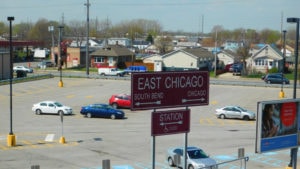
East Chicago
Credit: Adam Moss
In East Chicago, Indiana, where 90 percent of this population of 29,000 are people of color and one-third live below the poverty line, a lead crisis is unfolding and residents are concerned that the Environmental Protection Agency under Scott Pruitt is unlikely to respond.
For decades, industrial plants polluted the air and soil with lead and arsenic in East Chicago neighborhoods that included a public housing complex and an elementary school. In 2014, the EPA declared the lead plant in the area a Superfund site and began the cleanup, but a Reuters investigation in 2016 found that children living near the Superfund site still had elevated levels of lead in their blood. The EPA subsequently tested the water and found that not only did the homes in the vicinity have elevated levels of lead in their drinking water, but so did the entire city — much as Flint did during its 2014 water crisis. The EPA estimated that up to 90 percent of East […]











Lead is common in house paint used in older housing stock where children can be exposed. Lead was also used as a gasoline additive for many years and contributed to soil contamination.
I’d be very interested to see another study done in modern times on these areas still suffering from high levels of lead and corresponding violent crime rates. Though not universally excepted, I found it compelling regarding an article that was discussing the dramatic drop in violent crime rates across the country starting in the ’90s. One theory was the laws banning lead in paint and gasoline.
What grabbed me was the two graphs of a drop in lead detected in an area (city, region, neighborhood) and an almost exact drop in crime, after accounting for the time it takes for low lead levels to filter through an area. Those two graphs matched more closely than any other explanation I’m aware of.